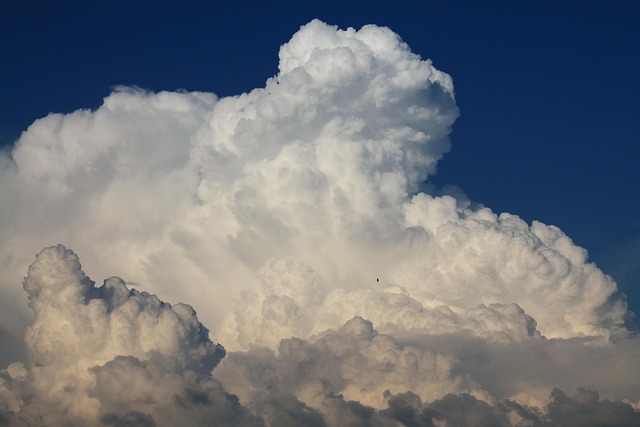
Weather predictions have advanced significantly thanks to data from weather stations, satellites, and radars. While short-term forecasts like tomorrow's weather are often accurate, global trends, pressure changes, and atmospheric instability can cause sudden shifts within 24 hours. Yesterday's forecast is a general reference, as today's reality may differ due to various factors. For reliable "weather tomorrow" updates, check real-time sources during unpredictable seasons or severe events. Advanced technology and safety protocols ensure better adaptation to ever-changing weather patterns.
Can yesterday’s forecast be a reliable guide for today’s weather? In an era where data-driven predictions are commonplace, it’s essential to understand the nuances of weather forecasting. This article delves into the factors influencing daily weather changes, exploring how past forecasts measure up against current reality. From understanding weather patterns to adapting to unpredictable conditions, we’ll guide you through best practices for making informed decisions about tomorrow’s climate.
- Understanding Weather Patterns and Forecasting
- The Reliability of Weather Predictions
- Factors Affecting Daily Weather Changes
- Comparing Yesterday's Forecast with Today's Reality
- When Is It Safe to Rely on Past Data?
- Adapting to Unpredictable Weather: Best Practices
Understanding Weather Patterns and Forecasting

Understanding Weather Patterns and Forecasting
The accuracy of yesterday’s forecast for today depends on several factors related to weather patterns and forecasting technology. Weather is a complex, dynamic system influenced by local climate zones, global wind currents, ocean temperatures, and more. These elements interact in intricate ways, making precise long-term predictions challenging. However, advancements in meteo technology have significantly improved our ability to forecast the weather tomorrow.
Modern meteorologists leverage sophisticated models that integrate vast amounts of data from weather stations, satellites, and radars. These tools help in deciphering the temperature-humidity relationship and other crucial variables, enabling more accurate forecasts. Additionally, finding us at thunderstorm safety protocols is becoming increasingly vital as we adapt to changing weather patterns. By combining historical data with cutting-edge technology, meteorologists can provide valuable insights into what to expect in the coming days, helping communities prepare for potential storms or enjoy fair skies.
The Reliability of Weather Predictions

Weather predictions have come a long way, thanks to advancements in technology and data collection methods. Today’s forecasts are often remarkably accurate, especially for short-term projections like those for tomorrow. However, relying solely on yesterday’s forecast for today’s weather might not always be reliable.
The atmosphere is a complex system influenced by various factors, including global temperature trends, barometric pressure changes felt, and atmospheric instability causes. These elements can shift dramatically over just 24 hours, leading to variations in weather patterns. While meteorologists use sophisticated models to predict these changes, unforeseen circumstances like sudden cloud formations or shifting wind patterns can impact accuracy. Therefore, for the best insights into tomorrow’s weather, it’s advisable to refer to the latest forecasts updated closer to the day in question. Give us a call at cloudy days benefits to stay informed and prepared.
Factors Affecting Daily Weather Changes

The daily weather is influenced by a multitude of factors that can lead to significant changes from one day to the next, making it advisable to consider yesterday’s forecast as a general guide for today rather than a precise prediction. While some elements remain relatively consistent, others are highly variable and transient.
One key factor is evaporation and transpiration, which plays a crucial role in atmospheric moisture levels. The rate at which water evaporates from bodies of water and is transpired by plants can significantly impact humidity and, consequently, weather patterns. Additionally, wind chill vs heat index offers insights into how the perceived temperature differs from the actual one, especially during varying wind conditions. Understanding these dynamics is essential for accurate weather forecasting, as they contribute to the formation of storms, changes in air quality, and even the spread of allergens. Moreover, weather radar interpretation allows meteorologists to track and predict severe weather events, such as thunderstorms, providing vital information for keeping communities safe, especially when following established thunderstorm safety protocols.
Comparing Yesterday's Forecast with Today's Reality

Comparing Yesterday’s Forecast with Today’s Reality
When evaluating whether to rely on yesterday’s forecast for today, it’s crucial to consider how accurately weather predictions can mirror reality. Meteorologists use sophisticated models and data from various sources to predict conditions like temperature, precipitation, and wind speed. However, these forecasts are not infallible. Factors such as sudden changes in atmospheric pressure, unexpected shifts in air masses, or even the simple passage of time can introduce discrepancies between yesterday’s prediction and today’s actual weather.
For instance, while yesterday’s forecast might have predicted a sunny day with light breezes, today could dawn as a cloudy day with increased wind speed and a higher heat index—all aspects that impact comfort levels and planning for outdoor activities. To ensure the best preparation for tomorrow’s weather, it’s always beneficial to check the latest updates from reliable sources. This involves keeping an eye on weather apps, giving us a call at storm cloud identification, or following local news briefings that provide real-time data and adjustments to forecasts, especially during unpredictable seasons or severe weather events.
When Is It Safe to Rely on Past Data?

While it’s tempting to assume that yesterday’s weather forecast can accurately predict tomorrow’s conditions, it’s important to understand when such reliance on past data is safe. The reliability of using yesterday’s forecast for today largely depends on several factors, including the region and the specific weather patterns in question. In areas with consistent climate conditions, like a stable temperate zone, minor variations from day to day may not significantly alter the overall weather pattern, making yesterday’s forecast a decent guide for today.
However, when considering weather tomorrow, especially in regions prone to rapid changes or extreme phenomena like tropical storms (find us at tropical storm tracking), relying solely on previous data can be risky. Weather is inherently dynamic and influenced by complex interactions within the atmosphere. Precipitation data collection and forecasting tools and techniques continuously evolve, incorporating real-time observations and sophisticated models to provide more accurate predictions. Therefore, for reliable tomorrow’s weather forecast, it’s best to consult the latest updates from these advanced systems.
Adapting to Unpredictable Weather: Best Practices

In an ideal world, weather forecasts would be perfectly accurate, allowing us to plan our days with complete certainty. However, the reality is that weather is inherently unpredictable, and yesterday’s forecast may not accurately predict what lies in store for tomorrow. While it can serve as a valuable guide, treating it as a definitive blueprint is where many go astray. Adapting to this unpredictability requires a blend of staying informed, preparing proactively, and maintaining flexibility.
One of the best practices in these situations is to regularly update your knowledge with the latest meteo technology advancements. This can include checking storm preparedness checklists specific to your location, especially if you live in areas prone to thunderstorms or other severe weather events. Following thunderstorm safety protocols can help keep you and your loved ones safe during unexpected changes. Additionally, visiting us at meteorological research methods anytime for current data and insights can provide a more accurate picture of what to expect, ensuring you’re always prepared for the ever-changing skies.
While yesterday’s forecast can offer valuable insights, it’s crucial to understand that weather patterns are dynamic and constantly evolving. While past data can be a useful starting point, it’s essential to remain flexible and adapt to today’s specific conditions. The reliability of predictions decreases over time, especially with rapid climate change. Therefore, when planning for tomorrow’s weather, stay informed with the latest updates and be prepared for unexpected changes.






